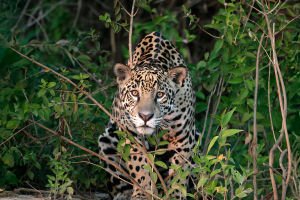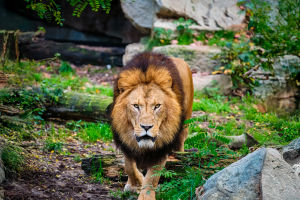Have you ever paused by a marsh or a shallow pond and noticed the buzz of life? Wetlands are often overlooked landscapes, but they are some of the most vibrant ecosystems on Earth.
These watery habitats support a dazzling variety of wildlife, offering food, shelter, and breeding grounds. From frogs hiding among reeds to migratory birds resting on the water's edge, wetlands are teeming with life—and every species depends on them in unique ways.
1. A Home for Diverse Species
Wetlands are a haven for animals of all kinds. Amphibians like frogs and salamanders thrive in the shallow waters where they can lay eggs safely. Fish use the dense vegetation to hide from predators while young hatchlings grow strong. Birds, from tiny warblers to large herons, rely on wetlands for nesting and feeding. Even mammals, such as beavers and otters, build homes and forage in these areas. The combination of land and water creates a unique environment where species that normally wouldn't cross paths can coexist.
2. Food and Shelter Abundance
One reason wetlands support such rich biodiversity is the availability of food. Aquatic plants, insects, and small fish provide meals for birds, reptiles, and mammals. Insects buzzing above the water are a primary food source for frogs, bats, and dragonflies. The thick vegetation, like reeds and cattails, offers hiding spots from predators, safe nesting areas, and protection from harsh weather. Even during dry seasons, water trapped in pools or ponds can be a lifeline for animals struggling to survive.
3. Breeding and Nursery Grounds
Many species use wetlands as a safe place to reproduce. Frogs and toads lay their eggs in shallow water, where hatchlings have a better chance of avoiding predators. Fish spawn among submerged plants, while birds build nests in tall grasses. Wetlands act as nurseries for countless species, providing both nourishment and protection. For migratory animals, these areas become critical pit stops along long journeys, allowing them to rest and refuel before continuing.
4. Natural Filtration Systems
Wetlands don't just support wildlife—they also help maintain the health of surrounding ecosystems. They act as natural filters, trapping sediments, pollutants, and excess nutrients before water flows into rivers and lakes. This clean water benefits fish, amphibians, and plants, creating a healthier environment for every creature that relies on it. By reducing contamination, wetlands indirectly protect predators like birds and mammals that feed on aquatic life.
5. Seasonal Adaptations
Animals in wetlands have evolved clever ways to cope with changing conditions. Frogs enter periods of dormancy when water levels drop, while some fish can survive in small, oxygen-rich pools. Migratory birds time their arrival to coincide with peak insect hatches or fish spawning, ensuring plenty of food. Mammals adapt by storing food or moving to drier areas temporarily. These adaptations highlight the resilience of life and the essential role wetlands play in sustaining it.
6. Interconnected Ecosystems
Wetlands are more than isolated pockets of water—they connect to rivers, lakes, and even forests. This network allows species to move between habitats, find food, and maintain genetic diversity. For example, fish may spawn in wetlands but live much of their mature lives in larger rivers. Birds travel between wetlands and forests to feed, rest, and nest. Protecting one wetland often has far-reaching benefits for the broader ecosystem.
7. Threats and Conservation
Despite their importance, wetlands face threats from drainage, pollution, and development. Loss of wetland areas can dramatically reduce wildlife populations, disrupt migration routes, and decrease biodiversity. Conservation efforts, such as creating protected areas, restoring degraded wetlands, and reducing chemical runoff, are crucial. Even small community initiatives, like planting native vegetation along waterways, can help preserve these habitats. By understanding and valuing wetlands, we can ensure that wildlife continues to thrive.
Wetlands are nature's unsung heroes, quietly sustaining life in ways that are easy to overlook. Every frog croak, bird call, and fish splash tells a story of survival, adaptation, and interconnection. Observing these habitats reminds us of the delicate balance that keeps ecosystems alive. Protecting wetlands means protecting countless species, preserving biodiversity, and maintaining natural systems that benefit the planet as a whole.
Next time you walk near a marsh, pond, or swamp, take a moment to notice the life it supports. From tiny insects to towering birds, wetlands are bustling with activity, teaching us that even the quietest places can hold incredible wonders.


